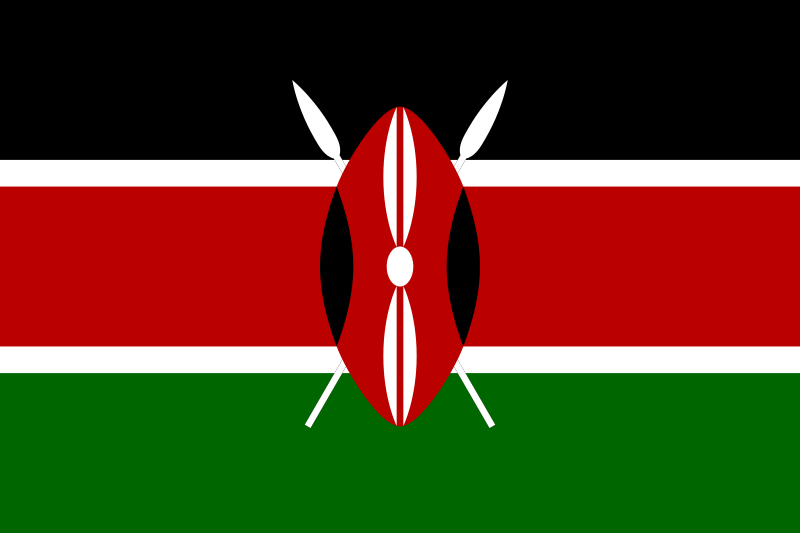Humanitarian situation report for children in Kenya

Capital: Nairobi
Area: 569,140 km2
Population: 55,393,576
Form of government: Presidential republic
Kenya is the seventh most populous country in Africa. The official languages are English and Swahili. In addition, about forty indigenous languages are spoken in the country.
72% of the population lives in rural areas. 30 out of every 1,000 newborns and 40 out of every 1,000 children under the age of five die. The quality and accessibility of healthcare remain a major challenge, with approximately 35 million Kenyans unable to access even basic healthcare.
Education is free in Kenya. However, many children are unable to attend school because they support their families by working in the fields, raising livestock, cooking, or fetching water. Those who want to go to school also face problems of distance and transportation. According to a 2020 UNICEF report, the fact that nearly 1,200,000 primary school-age children are unable to attend school is proof of this. Since the cost of secondary education exceeds the monthly income of most families in rural Kenya, the secondary school enrollment rate nationwide is 67%.
Terrorist attacks on schools in northeastern Kenya have directly affected students and teachers. In addition, drought has led to school closures, water supply problems, and malnutrition. Refugee children in Dadaab and Kakuma struggle to get an education in empty classrooms and with insufficient teachers.
According to 2016 International Monetary Fund data, Kenya ranks 154th in the world with an average annual income of $1,662 per capita and 41.5% of children living below the poverty line. Although the number of children living or working on the streets is unknown, it is estimated at 250,000. A study of 2,393 street children in western Kenya found that the majority of these children were separated from their parents or had experienced physical violence. According to the research, the most common way for street children who have to work to survive and obtain food is to collect recyclable materials or beg. In Kenya, data from the Kenya National Bureau of Statistics shows that 8.5%, or 1,300,000 children, are engaged in child labour. In Kenya, problems such as poverty, limited access to drinking water and health services, violence against children, and child marriage are serious problems for the country. It is estimated that the number of orphaned and abandoned children in the country exceeds 3 million, and that an average of 700 children become orphaned or orphaned due to HIV every day. According to 2020 data, 82,000 children between the ages of 0 and 14 are living with the virus. In addition, there are 1,050,000 migrants in the country, 294,00 of whom are under the age of 18.
According to the Kenyan government, there are over 800 registered orphanages housing an estimated 45,000 children. Orphaned and vulnerable children constitute about 1/5th of the child population in the country. Missionary organizations continue to work through orphanages in the country. Some of these are St. Carl Hall Children’s Home, SOS Children’s Villages, Prosperous Kenya, Raheema Home, Likoni Orphanage, Baraka Children’s Home, Swapor Orphanage, Likoni Child of Mercy Orphanage Centre, Shanzu Orphanage, Minto Children’s Home, Tabarak Orphanage, Ray of Hope Outreach Mission, Mombasa Children’s Home, and Dickson Children’s Centre.
Sources:
CANİK, Recep. “Kenya’da 600 Kimsesiz Çocuk İki Katlı Yetimhanede Kalıyor”. AA. (30.10.2016). https://www.aa.com.tr/tr/dunya/kenyada-600-kimsesiz-cocuk-iki-katli-yetimhanede-kaliyor/674972. (25.10.2021).
Humanium. “Children of Kenya”. https://www.humanium.org/en/kenya/. (25.10.2021).
Kidsalive International. “Kenya”. https://www.kidsalive.org/where-we-work/country-59/. (25.10.2021).
PMC. US National Library of Medicine National Institutes of Health. “Orphans and Vulnerable Children in Kenya: Results from a Nationally Representative Population-Based Survey”. https://www.ncbi.nlm.nih.gov/pmc/articles/PMC4794990/. (25.10.2021).
The Guardian. “Outcry Over ‘Saviour Complex’ Fueling Exploitation of Kenyan Children”. https://www.theguardian.com/global-development/2018/nov/19/outcry-over-saviour-complex-fuelling-exploitation-kenya-orphanages. (25.10.2021).
Worldometer. “Kenya Population”. https://www.worldometers.info/world-population/kenya-population/. (25.10.2021).